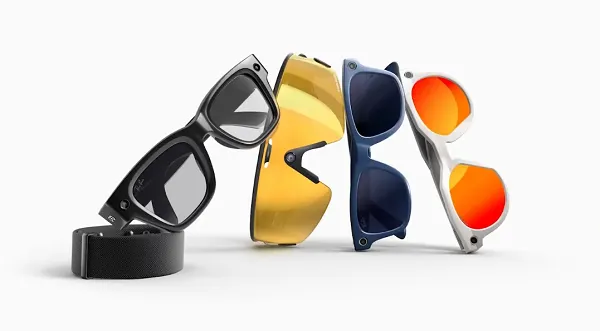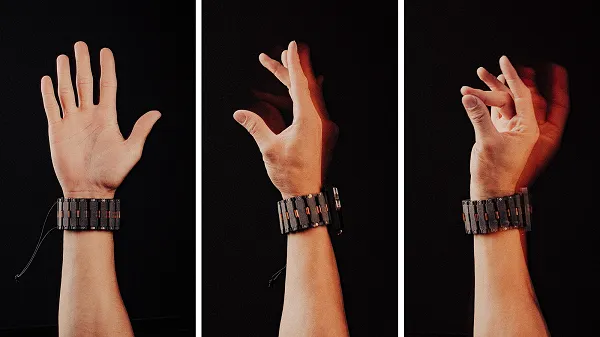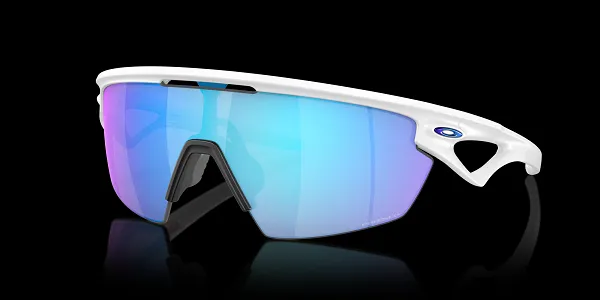Looks like somebody at Meta HQ hit publish a little early on its latest video for its upcoming smart glasses project, with the platform seemingly previewing various new styles of glasses, including one with a heads-up display, in the now removed clip.
The video, which was uploaded to Meta’s YouTube channel (then removed a short time later), is likely a promo for Meta’s Connect conference, which is being held virtually later this week.
And it displayed a few different smart glasses, or “AI glasses” as Meta now likes to call them, that are likely to be on show at the event.

As you can see in this still image, which was taken from the clip before it was removed, Meta looks set to showcase four different variations of its AI glasses, including:
- It’s Ray-Ban-branded HUD glasses, which will include a heads-up display element, as well as Meta’s long-awaited wrist controller device
- Oakley Meta Sphaera glasses, which are aimed at athletes, and feature a camera in the middle of the frame
- The latest version of Meta’s Ray Ban AI glasses
- Its current Oakley Meta HSTN glasses
All of these have been in development for some time, and it looks like Meta’s now very close to making an official announcement on these new models, as it continues to build out its AI/AR glasses line-up.
Though the main item of interest, of course, is Meta’s HUD glasses, which are reportedly being called “Hypernova” in development.
As reported by UploadVR, the Meta video highlights various uses of the new HUD glasses, with the overlay and wrist control enabling the user to send messages, get directions, identify things that they can see, and more.

That functionality is pretty much as has been expected for some time.
Back in January, Bloomberg reported that Meta was working on a new version of Ray Ban glasses with a small heads-up display, which will enable users to get notifications, view photos, and more, within their field of view.
Further reports have suggested that Meta’s Hypernova glasses will play a sort of bridging role between its current AI glasses and full AR wearables, with the inclusion of Meta’s revolutionary wrist-controlled UI set to be a significant step in its broader development.
Meta’s wrist controller will use differential electromyography (EMG) to detect muscle movement, then translate that into digital signals.

That could be a revolution in digital interaction, and a key step in Mark Zuckerberg’s plan to have glasses overtake phones as our key connective device.
Which is why this is such a significant launch, with reports also suggesting that Meta’s Hypernova glasses will cost around $800 at launch.
Meta’s Oakley Sphaera glasses meanwhile were first reported back in January. The design is based on Oakley’s existing Sphaera glasses, which are designed to maximize performance for athletes.

The camera has reportedly been placed in the middle of the frame to reduce weight, with the main focus of these glasses being to help athletes with critical data capture for their training.
As noted, neither of these is a surprise, though it is interesting to see where Meta’s headed with its AI glasses, and how it’s looking to take a step-up with its next models. Expanded usage, especially with the application of AI, could accelerate their development, and with Meta already leading the way on smart glasses sales, it seems well-positioned to capitalize on that market position, and build a bigger product business.
Of course, there will be competition.
Apple is still developing the second generation of its Vision Pro AR device, while just today, Snapchat launched its new Snap OS for its AR Specs, which it’s planning to launch to consumers next year.
Though each company is taking a very different approach, and it’ll be interesting to see which actually breaks through and becomes the must-have device for AI/AR interaction.
If I had to guess, I’d be betting on Meta to make the most significant advances, and with its AI glasses already selling well, it also has the production and design pipeline to come up with better, more popular wearable models.
Vision Pro is not designed for everyday use (at this stage), while Snap’s device looks set to be functionally inferior, given that Meta owns its own AI infrastructure, and has far more invested in design and manufacture of its device.
So while others may be able to get ahead of Meta on full AR, I suspect that, eventually, Meta’s approach of rolling out AI glasses, which will then flow into its AR tool, will be the most successful path to sustainable, viable production of the best device.
Just no more random ads with Kris Jenner please.








Recent Comments